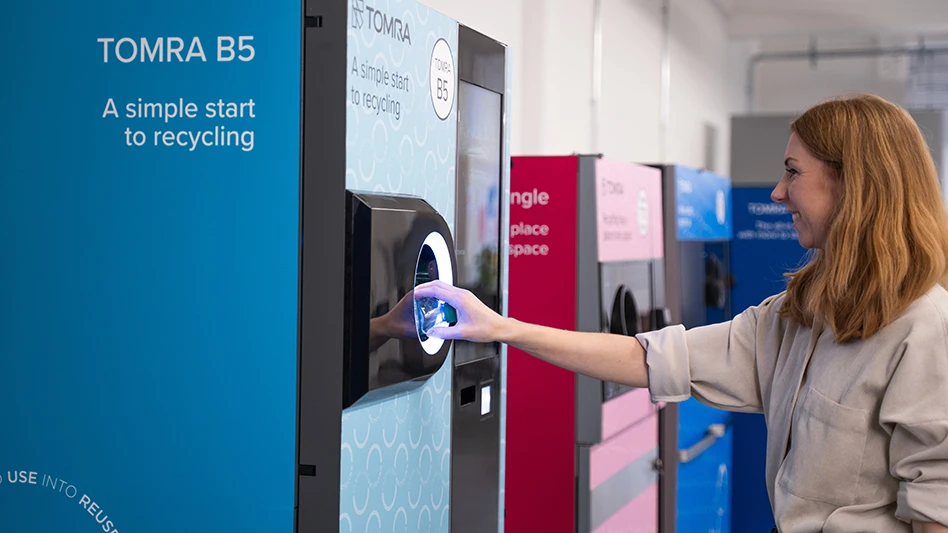
Photo courtesy of the BIR
Stainless steel production has changed considerably in recent years, creating significant challenges, particularly for many producers and suppliers in Europe, according to speakers during the latest meeting of the Bureau of International Recyclers (BIR) Stainless Steel & Special Alloys Committee, May 27.
The meeting was part of the BIR World Recycling Convention & Exhibition in Valencia, Spain, May 26-28.
Ritesh Maheshwari of India-based Shabro Metallic Pvt. Ltd. set the scene, summarizing the latest “BIR World Mirror on Stainless Steel & Special Alloys.” Signs of recovery in Europe’s stainless steel market were derailed by U.S. tariff announcements, and first-quarter financial reports from some major European mills pointed to declining margins.
However, China’s mills continued to increase production, contributing to oversupply. India’s finished stainless steel output rose 13 percent to 3.7 million metric tons from April 2023 to March 2024, but scrap imports dipped 1-2 percent to 1.3 million metric tons. Mills were exercising caution amid the current climate of uncertainty, aligning import decisions with current order books rather than stockpiling.
In the Middle East, prices rose owing to increased raw material inflation, supply chain issues and energy costs.
Turning to nickel, Maheshwari said declining demand from the battery sector arose from a shift to nickel-free batteries. He noted a 19 percent drop in demand for nickel-manganese-cobalt batteries.
Markus Moll, managing director of SMR GmbH in Austria, described “an ugly picture” for the European market. A quarter of a century ago, Europe accounted for approximately 40 percent of global stainless steel production, but that share has slumped to less than 10 percent. With Indonesia and China becoming increasingly dominant players, he said: “There is a real risk that we could lose our supply chain here in Europe—and if upstream dies, also downstream dies.”
Moll said he expected 4 percent growth in crude stainless steel production this year, with Europe being the most sluggish, whereas gains of 20 percent and 3 percent were anticipated for Indonesia and China, respectively. A single company, Tsingshan, was now producing 30 percent of the world’s stainless steel, rising to 40 percent for austenitic, he said. “This is frightening.”
He also predicted that, within the next five to 10 years, “China will make a big jump up in superalloys for jet engines,” and observed that the USA was a clear net importer of nickel alloy scrap and, therefore, was unlikely to impose tariffs.
Moll shared some good news, as well. With the exception of India, all regions worldwide recorded a higher scrap ratio in 2024 than in 2023, including China, where local availability was improving, he said. Additionally, stainless steel stock levels are low worldwide, except in China.
However, he closed his presentation with a warning about the risks posed by imports to Europe’s fabrication future. “There are some products—heat exchangers, for example—and some value-added products where we need to make sure that they can be produced in Europe profitably,” Moll said. “It is a constant erosion of our market here, and if we do nothing, then we will end up probably in 10 years from now with a market that is only half as big as it is right now.”
Jianbin Meng, director of economics and environment at the Portugal-based International Nickel Study Group, provided data and comments that underlined the crucial role recycling plays in stainless steel production. His organisation calculated that around 1 million metric tons of nickel scrap inputs were used in stainless steel production in 2023.
While stainless steel would remain the largest nickel-using industry in the coming years, demand from the battery sector is emerging to feed growth in electric vehicle (EV) sales. The EV share of total car sales climbed to 22 percent in 2024—“far ahead of the estimation made in the past several years,” Meng said. “And there is still big room to grow the market.”
He added that the recycling industry is fundamental to meeting growing energy and technology transition demand for critical raw materials and should look to position itself accordingly. Meng urged the sector to “adopt advanced recycling technologies in order to leverage all the supporting policies contained in all the regulations, initiatives and acts.”
Latest from Recycling Today
- ReMA urges open intra-North American scrap trade
- Axium awarded by regional organization
- China to introduce steel export quotas
- Thyssenkrupp idles capacity in Europe
- Phoenix Technologies closes Ohio rPET facility
- EPA selects 2 governments in Pennsylvania to receive recycling, waste grants
- NWRA Florida Chapter announces 2025 Legislative Champion Awards
- Goldman Sachs Research: Copper prices to decline in 2026





